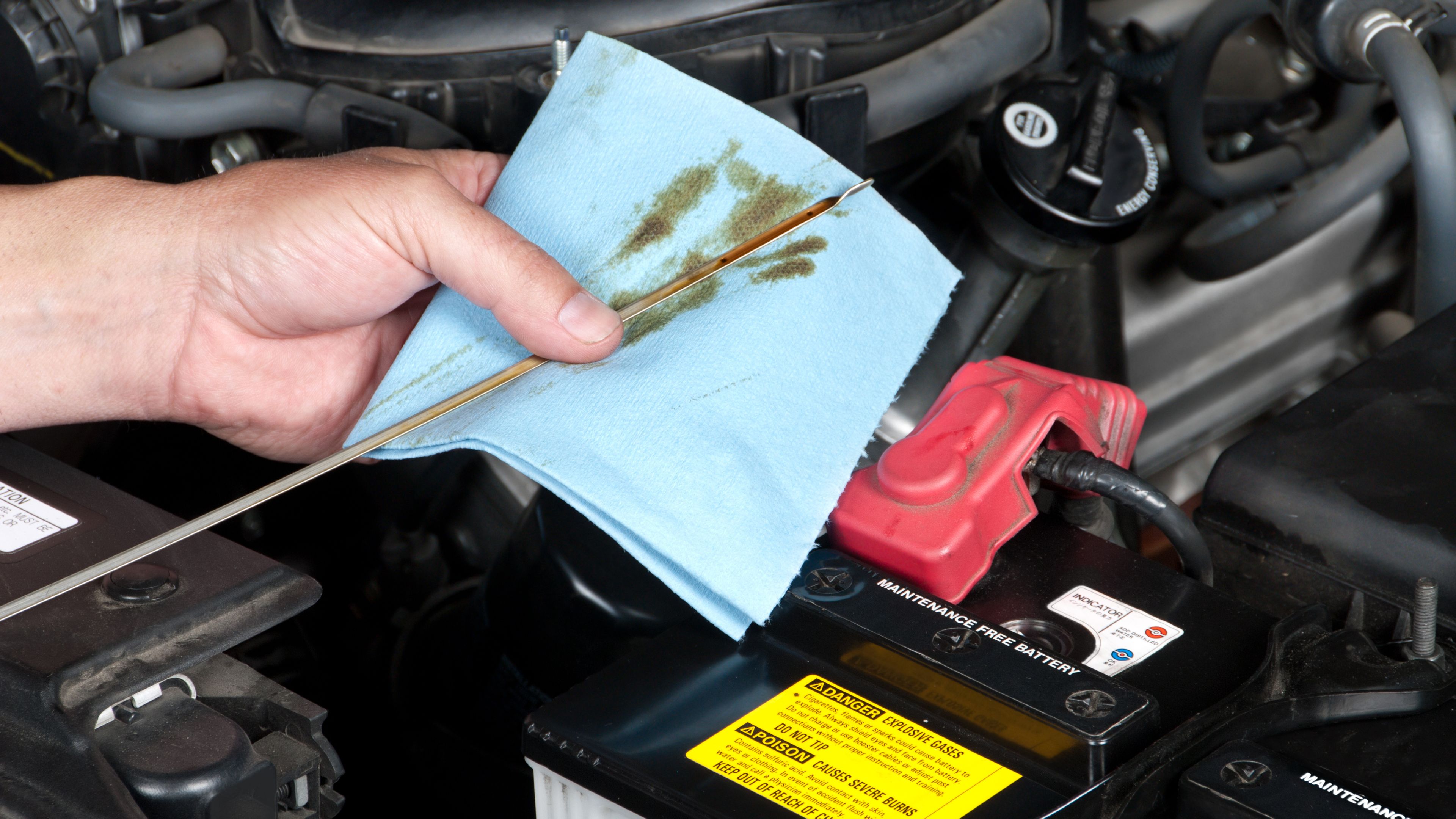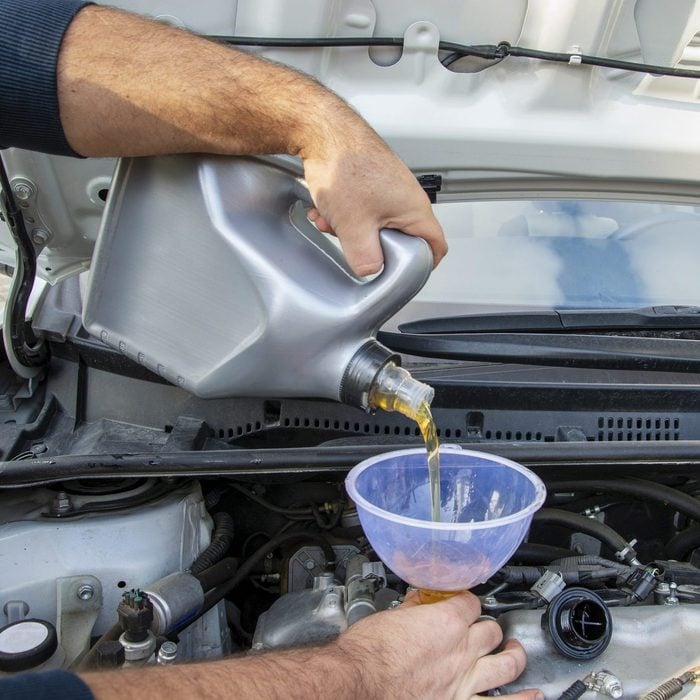Yes, you can replace engine oil yourself with an oil change kit easily and efficiently. Performing this task can save time and money while ensuring proper maintenance for your vehicle.
With just a few basic tools and the right oil change kit, you can complete the process in your own garage or driveway. By following the manufacturer’s instructions and safety precautions, you can take control of this essential aspect of car care.
Regular oil changes are crucial for the longevity and performance of your engine, making this a valuable skill to learn. Not only will you gain a sense of accomplishment, but you will also have the satisfaction of knowing your vehicle is in top condition.

Credit: m.youtube.com
Why Consider Replacing Engine Oil Yourself
When it comes to maintaining your car, replacing engine oil is an essential task that helps to keep your vehicle running smoothly and efficiently. While many people prefer to take their car to a professional for an oil change, there are several reasons why you may want to consider replacing engine oil yourself. In this article, we’ll explore the benefits of DIY oil changes and why they may be the right choice for you.
Save Money
One of the key reasons to consider replacing engine oil yourself is the potential cost savings. By purchasing an oil change kit and performing the task at home, you can avoid the labor costs associated with having a professional mechanic do the job.
Convenience
DIY oil changes also offer a level of convenience that can be appealing to many car owners. With an oil change kit and some basic tools, you can perform the task at a time that suits you, without having to book an appointment or take time out of your day to visit a mechanic.
What You Need To Replace Engine Oil Yourself
Learning to replace engine oil yourself can save you time and money. But before you get started, it’s important to have the right tools and equipment on hand. Below, we’ll cover what you need to replace engine oil yourself, including the oil change kit, basic tools, and safety equipment.
Oil Change Kit
An oil change kit is a convenient way to ensure you have everything you need. Typically, an oil change kit includes:
- Engine oil
- Oil filter
- Drain plug washer/gasket
- Oil pan or drain container
Basic Tools
In addition to the oil change kit, you’ll need some basic tools to successfully replace engine oil:
- Socket wrench
- Oil filter wrench
- Funnel
- Rubber mallet (optional)
Safety Equipment
When working under a vehicle, it’s crucial to prioritize safety. Here are essential safety equipment to have:
- Safety goggles or glasses
- Nitrile or latex gloves
- Creeper or jack stands (if working under the vehicle)
Step-by-step Guide To Replacing Engine Oil
Performing regular oil changes is crucial to keep your vehicle running smoothly and increase its lifespan. While some people might prefer taking their car to a mechanic for an oil change, others may choose to replace the engine oil themselves using an oil change kit. If you fall into the latter category, this step-by-step guide will walk you through the process of replacing engine oil in your vehicle.
Prepare Your Vehicle
Before you begin the oil change process, make sure you have all the necessary tools and equipment. Here’s what you’ll need:
- Oil drain pan
- Oil filter wrench
- New oil filter
- New engine oil
- Ratchet and socket set
- Funnel
- Clean shop towels
- Oil filter drain pan (if required)
Once you have gathered these tools, ensure your vehicle is parked on a level surface and the engine is cooled off. This will prevent any potential accidents and ensure a smooth oil change process.
Drain The Old Oil
To drain the old oil, follow these steps:
- Locate the oil drain plug under your vehicle’s engine.
- Place the oil drain pan directly underneath the plug.
- Using a ratchet and socket set, loosen the drain plug in a counterclockwise motion.
- Allow the old oil to drain completely into the oil drain pan.
- Once the oil has fully drained, securely tighten the drain plug in a clockwise motion.
Dispose of the old oil responsibly by taking it to a local recycling center or an auto parts store that accepts used oil.
Remove And Replace The Oil Filter
Follow these steps to remove and replace the oil filter:
- Locate the oil filter, which is typically located near the engine.
- Using an oil filter wrench, loosen the old oil filter in a counterclockwise motion.
- Once the filter is loose, carefully remove it by hand.
- Before installing the new oil filter, apply a thin layer of fresh oil to the rubber gasket located on the top of the filter.
- Screw the new oil filter onto the fitting, making sure it is hand-tightened securely.
- Double-check the oil filter’s tightness to ensure it is sealed properly.
Add New Oil
Now that the old oil and filter have been removed, it’s time to add fresh oil. Follow these steps:
- Locate the oil filler cap, which is usually marked “engine oil” or has an oil can symbol.
- Using a funnel, slowly pour the new oil into the engine through the filler hole.
- Refer to your vehicle’s owner manual for the recommended type and amount of oil.
- Once the oil is added, replace the oil filler cap securely.
Check Oil Level And Clean Up
The last step is to check the oil level and clean up any spills:
- Start your vehicle and let it idle for a few minutes to allow the new oil to circulate.
- Turn off the engine and wait for a couple of minutes to allow the oil to settle.
- Remove the dipstick, wipe it clean with a shop towel, then reinsert it into the dipstick tube.
- Remove the dipstick again and check the oil level. It should be between the minimum and maximum marks on the dipstick.
- Add more oil if necessary, ensuring not to overfill.
- Finally, clean up any oil spills or drips using shop towels or an oil spill absorbent.
Congratulations! You have successfully replaced the engine oil in your vehicle using an oil change kit. Regularly scheduled oil changes will help maintain your vehicle’s performance and prolong its lifespan. Remember to dispose of the old oil and filter responsibly and adhere to your vehicle manufacturer’s recommended oil change intervals.
Benefits Of Using An Oil Change Kit
Complete Package
An oil change kit provides all necessary supplies in one package.
The kit typically includes oil, a new filter, and a drain plug washer.
Time-saving
With a kit, you save time by having everything you need at your fingertips.
No more last-minute trips to the store for missing items.
Proper Disposal Of Old Oil
Oil change kits often come with a container for easy disposal.
It ensures environmentally-conscious disposal of the old oil.
Precautions To Take When Replacing Engine Oil
When replacing engine oil, taking proper precautions is crucial to ensure the process is done safely and effectively.
Warm-up The Engine
Before starting the oil change process, warm up the engine to make the oil flow more easily during draining.
Use Proper Jack Stands
Always use proper jack stands to lift the vehicle securely off the ground before accessing the oil drain plug.
Dispose Of Old Oil Responsibly
After draining the old oil, ensure to dispose of it responsibly by collecting it in a suitable container and taking it to a certified recycling center.
Common Mistakes To Avoid When Replacing Engine Oil
When replacing engine oil with an oil change kit, some common mistakes to avoid include using the wrong oil viscosity, overtightening the oil filter, and not properly disposing of the old oil. Make sure to follow the vehicle manufacturer’s specifications and guidelines to ensure a smooth oil change process.
Mismatched Filter
One of the common mistakes to avoid when replacing engine oil is using a mismatched filter. The oil filter plays a crucial role in removing impurities and debris from the engine oil, ensuring that only clean oil circulates through the engine. Using the wrong filter can lead to inadequate filtration, which can cause engine damage and affect its performance. This mistake can be easily avoided by checking the specifications of your vehicle’s filter and ensuring that you have the correct one before proceeding with the oil change.
Over-tightening The Drain Plug
When changing engine oil, it is essential to remove and reinstall the drain plug correctly. Over-tightening the drain plug can lead to stripped threads, which can be a costly repair. It can also make it difficult to remove during future oil changes. To avoid this mistake, make sure to tighten the drain plug to the specified torque using a torque wrench. This will ensure a secure fit without risking damage to the oil pan or drain plug.
Using Wrong Oil Type
Using the wrong oil type is another common mistake that can have significant consequences for your engine. Different engines require different types of oil to ensure optimal performance and longevity. Using the wrong type of oil can result in poor lubrication, increased wear and tear, and reduced fuel efficiency. To prevent this mistake, always refer to your vehicle’s owner manual or consult with a professional to determine the correct oil type and viscosity for your engine.
Faqs About Replacing Engine Oil Yourself
How Often Should I Change My Engine Oil?
You should change your engine oil every 3,000 to 5,000 miles as a general guideline. However, this can vary between different vehicle models. It is best to consult your owner’s manual for specific recommendations.
Can I Reuse The Oil Filter?
No, oil filters should not be reused. It is important to replace the oil filter with every oil change to ensure proper engine functionality and performance.
What Happens If I Use The Wrong Oil?
Using the wrong type of oil can lead to engine damage and premature wear. It is crucial to use the correct oil viscosity and type recommended for your specific vehicle to maintain optimal performance and longevity.

Credit: www.hertz.com

Credit: www.familyhandyman.com
Conclusion
To sum up, changing your engine oil yourself using an oil change kit is a feasible option for car owners seeking a more hands-on approach. Not only can you save money and time, but you can also ensure the quality and type of oil used in your vehicle.
Just be sure to follow the manufacturer’s instructions and take necessary precautions. With the right tools and a little know-how, you’ll be confidently maintaining your engine’s health in no time.
